Old town
We encourage you to discover a slice of the town’s history through the buildings of different eras that are still standing. Some of them can be visited at certain times of year (see the section on Museums and Buildings to Visit), whereas others can’t be, due to being in use for private or civil purposes. However, the latter have had - and continue to have - great significance in the history and character of Zumaia, so here we explain about their history and characteristics.
Most of them are in the Old Town, so you can ask for the map in the Tourist Information Office, download it here, or you can also see the panels around the town, and this way, by following a route, you will get to know the oldest parts of Zumaia. Furthermore, there are explanations on the front of each building that will help you to better understand the history.
You can see, also, that video.
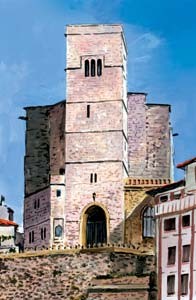
Saint Peter’s church
This church was probably built after the founding of the town in 1347, although its origins are tied in with the Monastery of Saint Mary that was already mentioned in the13th Century.
From the outside it is very austere resembling a fortress, a function which the building must have had during periods when pirates abounded in the area. Inside the single nave of the building, the 16th Century Romanist painting by Juan de Antxieta stands out.
Also worth mentioning are the side chapels that belong to local families of merchants who were very influential in the sea trade with England, Flanders and Brittany during the 16th Century
Here you will find more information about the artistic heritage of the church.
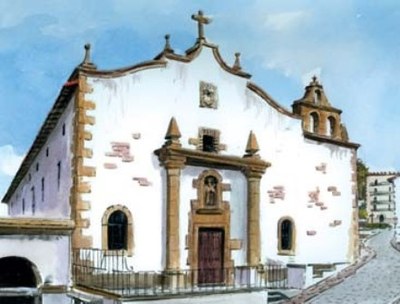
Saint Joseph’s convent
The convent was founded in 1609 by Francisca Labayen, who put for- ward her own tower-dwelling for this purpose.
It is claimed to have been one of the first Carmelite nuns’ convents in the Basque Country that followed the reforms of Saint Theresa. The building reflects the rules of sobriety that the reforms proposed and it is only in some of the elements of the façade, which were added in the early 20th Century, that one can see any signs of grandeur.
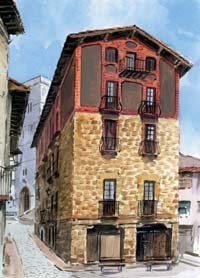
Zumaia palace
The palace is at the heart of the old quarter and very close to the parish church.
In the past the palace was the seat of the powerful “Zumaia Ganboa” family, one of the twenty-four “Parientes Mayores de Guipúzcoa” (Guipuzcoan aristocratic families in the Middle Ages) and one of the richest of the town. Although it has undergone a lot of change there are still parts of the original 15th Century building, such as the pointed arch over the entrance, a foliated window and the sandstone masonry stones that form the base of the building
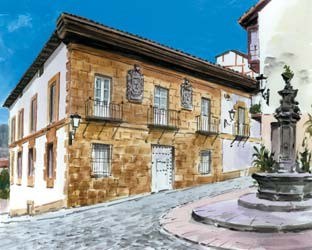
Olazabal palace
This palatial home was built by Juan de Olazábal, secretary to King Felipe IV and Accountant General of the Inquisition’s Supreme Council.
What most attracts attention to this lovely 17th Century building is its main front that is constructed with sandstone blocks. The front has the main entrance and wrought iron balconies on the main floor. Over the central balcony are the two coats of arms of the Olazábal family carved out of limestone. The finishing touch is given to the front of the building by the eaves that are decorated in accordance with the tastes of the period.
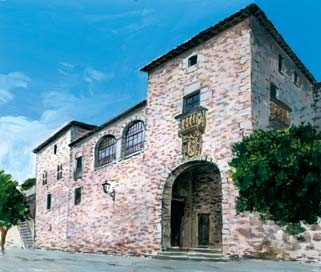
Ubillos palace
This palace belonged to the Ubillos family. Prior to the 16th Century it had a single tower, the one that is to the left of the main front. It was in the 16th Century that the central building, with its highly-Renaissance square courtyard, the right-hand tower, a wide entrance and the balconies were added, thus losing its defensive/military aspect of the past.
The palace now houses the Zumaia School of Music.
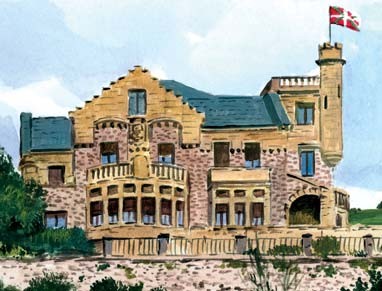
Foronda palace
This palace was built as a summer residence by the Marquis of Foronda in the early 20th Century.
In charge of the design was Eibar’s municipal architect, Juan José Gurruchaga, whose eclectic style brings to mind images of medieval castles. This palace reflects the tastes that were in vogue among the nobility and the bourgeoisie in the late 19th Cen- tury, early 20th Century.
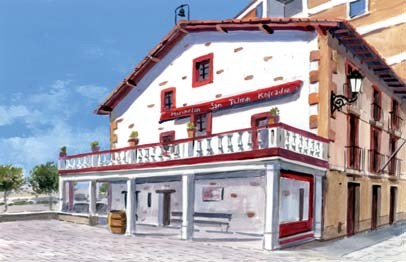
San Telmo seafarers' guild hall
The building that once hosted the Seafarers’ Guild, shows the sales room and its old “fish auction machine”, a device of great ethnographic interest and unique in the Basque Country.
It can be visited with a prior reservation. More information here.
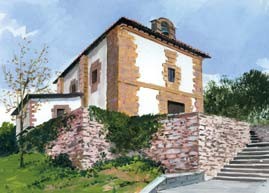
Saint Mary of Arritokieta
This hilltop sanctuary overlooks the town. Inside it there is a 16th Century image of Andra Mari (Saint Mary), the patron saint of Zumaia. An altarpiece that was made in the 17th Century but which has, however, a 16th-Century Hispanic-Flemish triptych on the bottom part of it, surrounds the image.
The central image on the triptych is that of Our Lady of Piety, flanked by Saint John the Baptist and by who is thought to be Saint Francis. Saint Francis Borgia was the most illustrious patient to ever be taken in at the old hospital for contagious diseases that used to stand alongside the sanctuary.
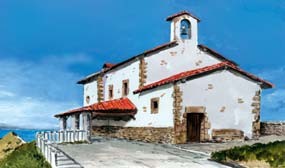
The sanctuary of Saint Telmo
This sanctuary stands on the edge of the cliffs that hang over Itzurun Beach. The first written reference to it dates back to 1540. Saint Telmo is the patron saint of sailors, and that is the reason why this sanctuary became the meeting hall for Saint Telmo’s Guild of Seafarers in the 17th Century.
The architecture is in the popular style. Within can be found a rococo altarpiece from the 18th Century made from wood with no gilding. Marking out the altarpiece are the images of Saint Jacques and Saint Clare; both being made when the town sold the hermitage at the dedication of both saints.
It can be visited with a prior reservation. More information here.
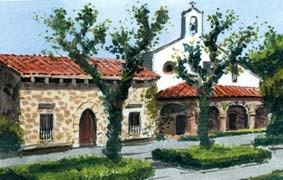
Z Cultural Space
Ignacio Zuloaga rebuilt this Cultural Space (1910-20) on the ruins of a hermitage (15thc.) and a pilgrim’s hostelry of St. James’ Way. He completed the monumental set with an attached building used as a studio-workshop.
Since 2012, Z Cultural Space exposes permanently a selection of works of the Basque painter, his historical collection (13thc-20thc.) and works
of internationally recognised modern and contemporary artists (Picasso, Miró and Tàpies among others).
Tel.: 677 078 445 • www.espaciozuloaga.com
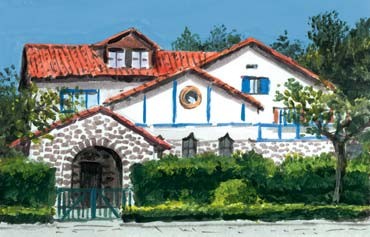
Beobide Museum
This museum is housed within a villa called Kresala, named after the Zumaia sculptor who had his workshop here. Born in 1891, Julio Beobide, who was a close personal friend of Ignacio Zuloaga, dedicated a large part of his work to making religious sculptures and realistic portrayals of everyday life.
The museum has several sketches and pieces made from a variety of materials, mainly wood, that include an unfinished sculpture of Jesus Christ. Also on show are the tools the artist used to create his work.
It is possible to visit the museum by previous appointment. More information here.
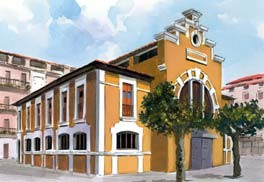
"Algorri" natures interpretation centre
This modernist building was built in 1912 as the municipal slaugtherhouse and is currently the “Algorri” Interpretation Centre.
The visit offers a second-to-none insight into Zumaia’s geological heritage which is known worldwide for its spectacular flysch formations, its rock formations that can be only seen with low tide and its eye-catching cliffs. In addition, the Centre also offers a series of
geology-related activities which it organises along with the town’s Tourist Office. These include geological visits and explanations, boat trips and trekking along the cliffs.
Tel.: 943143100 • www.algorri.eus

 turismoa@zumaia.eus
turismoa@zumaia.eus
 Bulegoa
Bulegoa









